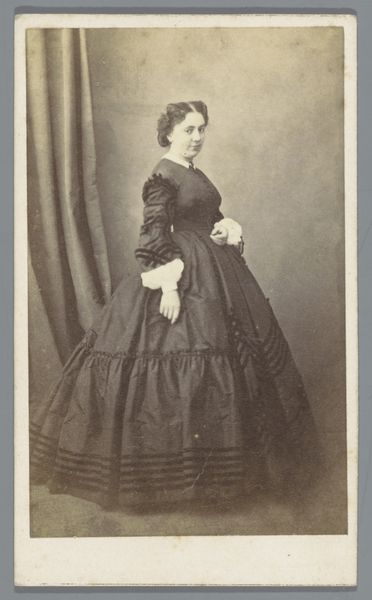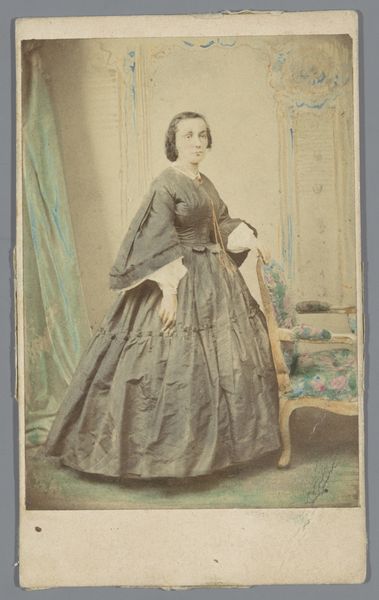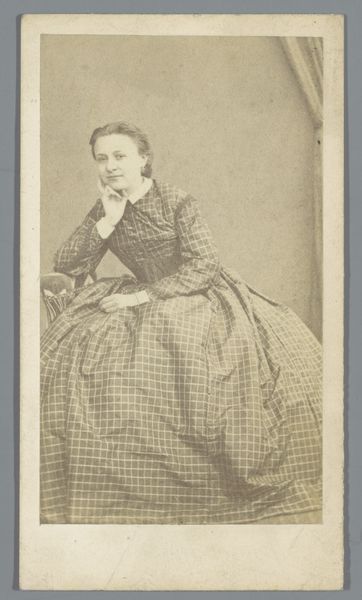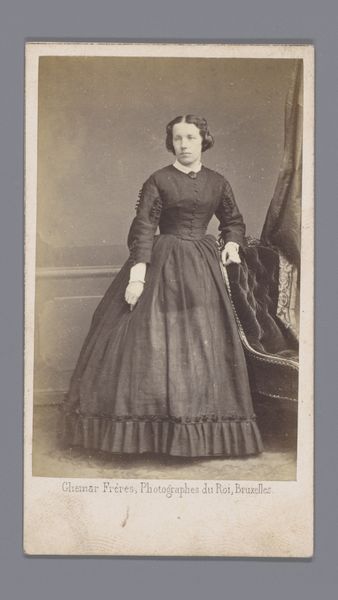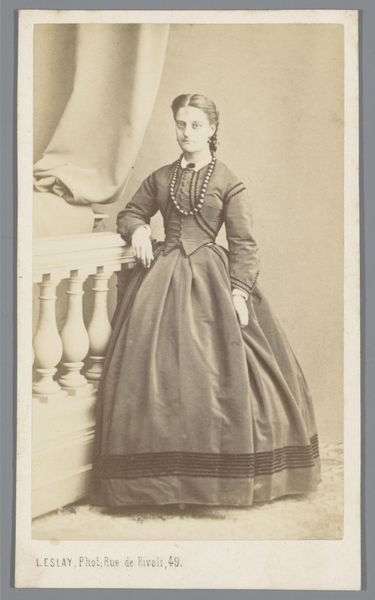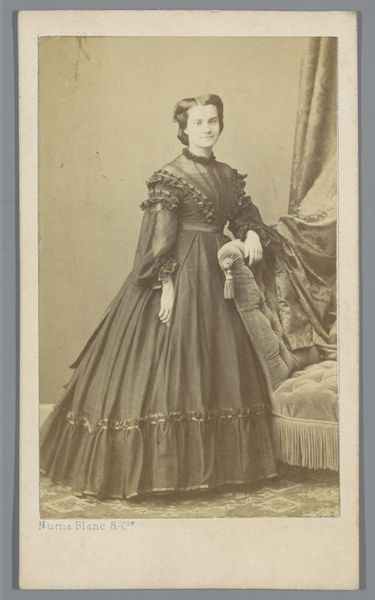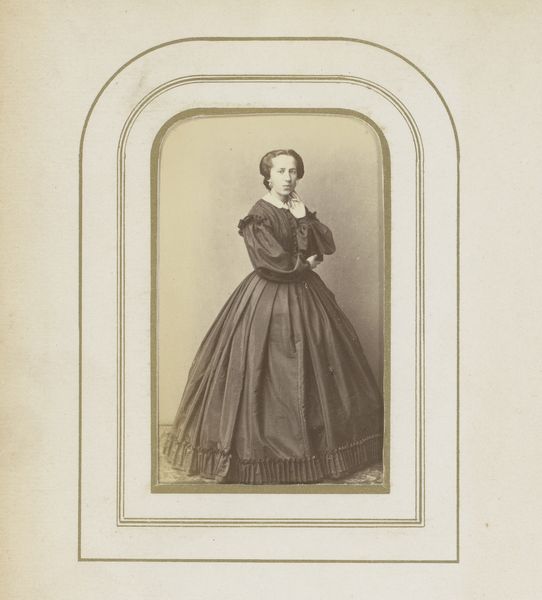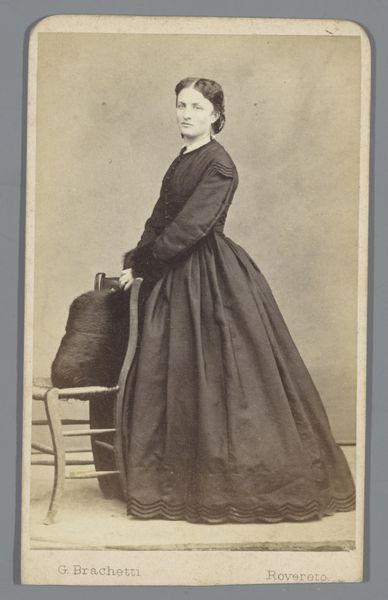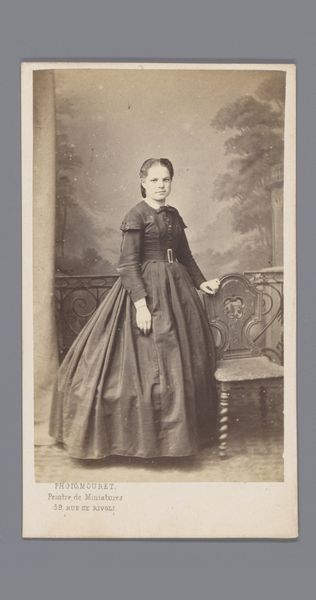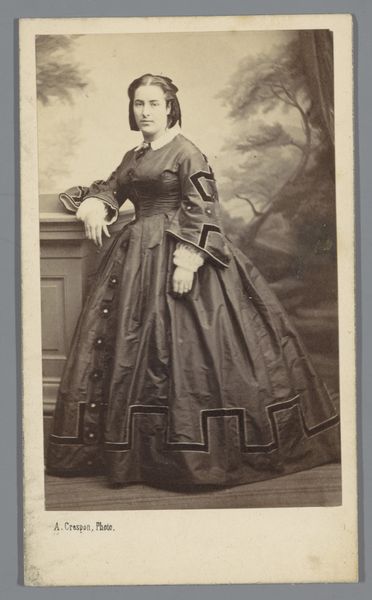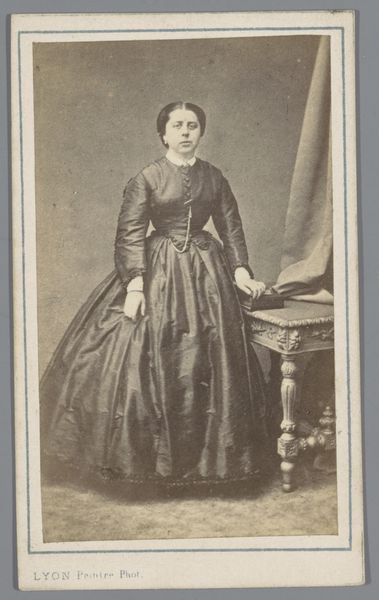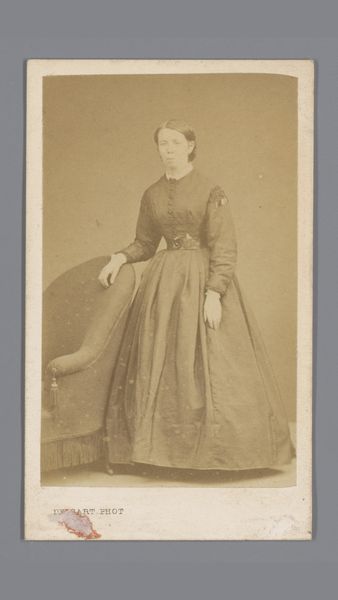
photography, albumen-print
#
portrait
#
photography
#
albumen-print
Dimensions: height 104 mm, width 61 mm
Copyright: Rijks Museum: Open Domain
Curator: This is an albumen print titled "Portret van een onbekende vrouw in een rok met een queue," created by N. Blanc et Cie. sometime between 1850 and 1865. Editor: The dress steals the show, doesn't it? All that silk. It's a striking shape, like an upside-down teacup, yet the muted tones lend a somber air. It feels...austere, almost. Curator: Indeed. The albumen process itself, involving egg whites, gives the photograph its characteristic sheen and sepia tones, contributing to that feeling. Consider the labor invested in that dress – the fabric, the sewing, the structure! It speaks volumes about the sitter's social standing and the meticulous nature of garment production at that time. Editor: It does read of status, definitely. And what about the 'queue,' that sort of bustle at the back? Bustles and such garments were practically signifiers of societal norms, restricting movement yet exaggerating form to symbolize a specific femininity and position of women at the time. Curator: Precisely! The whalebone, the layers...all resources carefully extracted and fashioned. Looking at the drape and considering trade routes and material acquisition offers so many angles. This object, this portrait, is also a map of labor. Editor: Yet her gaze is level, meeting ours directly. It almost seems to question this presentation of herself and her prescribed roles. It suggests perhaps a tension between outward performance and internal feelings. Curator: The act of commissioning and sitting for a photograph itself highlights changing social and cultural values. This image marks the move toward more affordable, reproducible portraiture. What were the implications of such accessibility? Did that in any way empower people such as this woman who previously wouldn't have been represented in artworks. Editor: Perhaps. To my eye, this portrait encapsulates that transition from the romanticized portraiture of the earlier century toward something more objective and potentially individual. The details of her clothing and gaze acting almost as a coded message about personal agency in a restricted world. Curator: A message inscribed not only in symbols, but in every meticulously crafted layer of fabric. Editor: A haunting reminder that even in stillness, objects can tell vivid stories of effort and culture.
Comments
No comments
Be the first to comment and join the conversation on the ultimate creative platform.
